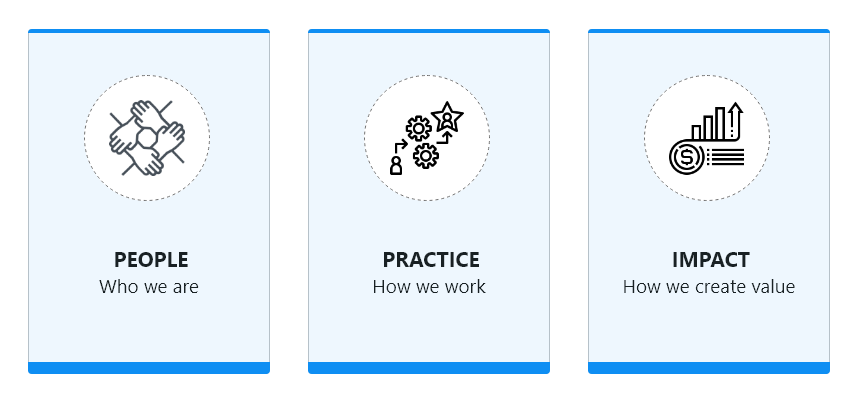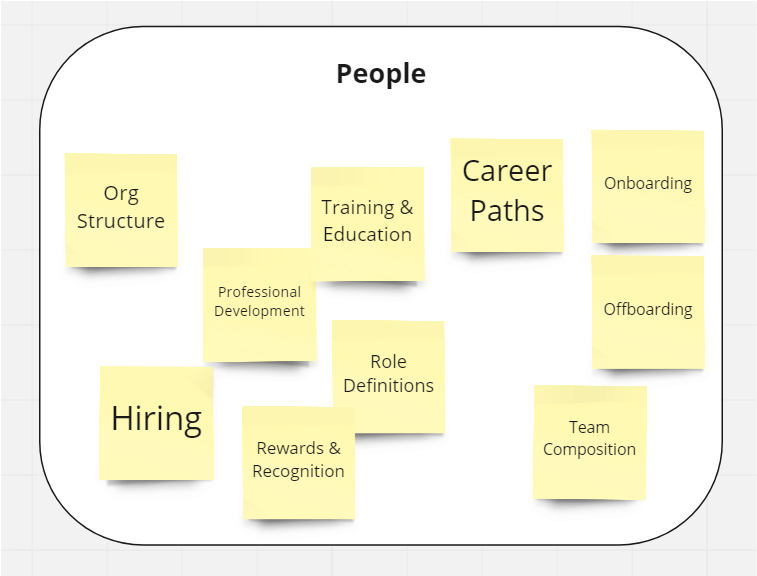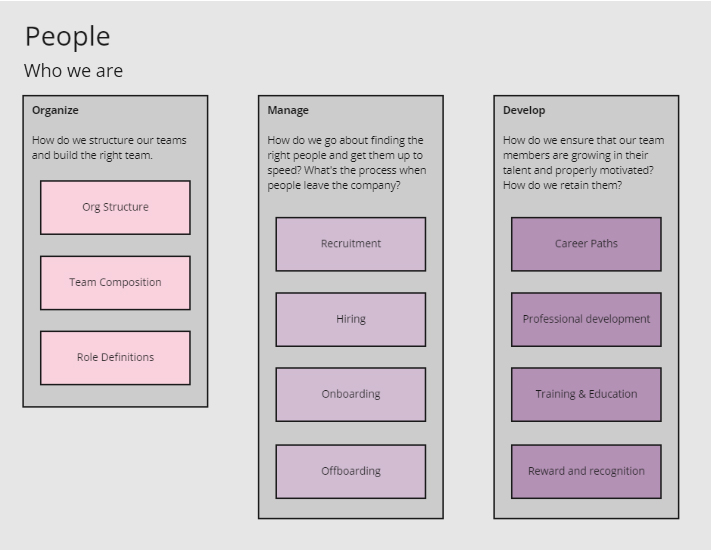
Achieving Success through Change with Design Ops
Leading a UX team is a lot like running a small business. While the core function of a UX team is to deliver great experiences for users, a manager has to account for a wide variety of operational needs from personnel-related activities like hiring, onboarding, and developing the next leaders, to improving design practice through standards and tooling. UX leaders can benefit greatly from systematically capturing, prioritizing and managing needed areas of improvement.
In 2019 we had an opportunity to improve our operational efficiency when we reorganized our UX resources. Up to this point we had three UX leaders dispersed across our department. Coming together as one team would give us an opportunity to align and improve the quality of our work.
Challenge
Create and execute a plan to manage organizational change.
My Role
Team leadership, Project planning, Working session facilitation, System design
Project
Time 1 month
Creating a Plan
With the reorganization we would be working together more directly, I emphasized to the other leaders that this was the time for us to focus on both alignment and operational efficiency. To move forward, I recommended that we dedicate time for weekly collaborative working sessions. They agreed.
I recommended a simple plan:
- Identify areas that needed improvement
- Create a system to manage change
- Communicate change to the team
Gathering feedback
Before we began meeting regularly, we wanted to get input from the team. We had a meeting where we gave them the opportunity to share their thoughts. We captured their feedback and afterwards I put together a form where additional questions or comments could be documented in a spreadsheet. We then combined their issues with our own to create topics for our working sessions.

The feedback they provided covered a wide range of topics. Including:
- Clarity in roles and responsibilities
- Improving our design process
- What our workflow should look like
- How to measure the impact of their work
- Accounting more for accessibility in our design work
- Utilizing mobile devices during testing
- A lack of emphasis on content design
Seeing that we had a number of items that we could work through, I began to think about how we could develop a system to address each one in our working sessions. Which topic was most important? How would we know? Which are related?
Developing a management framework
At this point I went away and did some research into Design Ops. The growing field of Design Ops was ripe with helpful information about how we could incrementally improve as our team continued to scale. It was a great learning experience. I first identified that there were three main areas of operation for our team:
- People
- Practice
- Impact

Using these three areas as buckets, I would then work a level deeper categorizing the individual aspects of our teams operations.

Finally I would assemble this into our UX Ops framework (shown below). We could then leverage this framework in our offsite working sessions to give context to the problems we were solving as leaders.



Working together
These working sessions were immensely helpful in becoming aligned with shared goals. Many coffees were consumed and afternoons were spent sitting at a table at Starbucks talking about how we could move the team forward. The Ops framework helped us contextualize the problems we were solving because we now knew what aspect of the team was being affected.

Future-proofing
To ensure we had a way to track current and future issues, I created a database where we could capture additional needs and translate them into work. We could attach a category to each issue, set a priority and assign who would be completing the work.

Now we had a place to go to view the state of the team from an operational perspective. Any time during team meetings that someone raised an issue, we had a place to go to easily add new items.
Leading a UX team through organizational change can be a challenge, but it’s also a great opportunity to position them to succeed. The work done up-front on the Ops framework will save us a lot of time and headaches down the road.